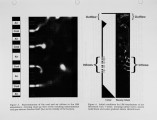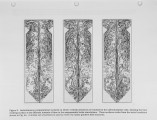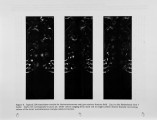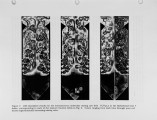| OCR Text |
Show demonstration of the technology on this large class of boilers, are important for development of this technology and for providing a further emissions control option to electric generating utilities. 2. FUVERBEND UNIT 7 BOILER Riverbend Unit 7, operated by Duke Power, is a 140 M W e tangentially-fired coal-burning utility boiler manufactured by ABB/CEand placed in service in 1954. A schematic of the facility is shown in Fig. 1. The unit is one of 29 such tangentially-fired boilers in the utility's generation system. To comply with the Title IV acid rain provisions of the 1990 Clean Air Act Amendments (CAAA), Duke Power had previously installed ABB/CE's Low NOx Concentric Firing System (LNCFS-1) with Close Coupled Overfire Air (CCOFA) on the unit. The LNCFS-1 system, shown in Fig. 2, consists of four coal nozzles separated by combination air registers, with an additional CCOFA register at the top. Four identical burners of the type in Fig. 2, one located in each corner of the 40-ft x 26-ft rectangular furnace cross section, comprise the only inflows to the boiler. The firing arrangement is based on a 6.5-degmain tangential firing circle, with the CFS air registers introducing air tangentially at 22-deg off the main firing circle. The CFS and straight air nozzles, together with the CCOFA and coal nozzles, can also tilt vertically to control temperature within the furnace when the boiler load is changed. In this configuration, the unit operates with NOx emissions of 0.40-0.45 lb/MMBtu. The utility is also subject to the 8-hour National Ambient Air Quality Standard (NAAQS) under the CAAA Title I ozone attainment requirement, which demands additional summertime NOx control. Duke Power anticipates that approximately 4 5 % additional NOx reduction from the current 0.40-0.45 lb/MMBtu baseline emissions level will be required by May 2004 to 2005 for the tangentially-fired boilers in its generation system. The utility therefore initiated a study to determine the cost of various options for meeting the 0.25 lb/MMBtu NOx emissions level needed to comply with the N A A QS requirement across its generation system. Based in part on its access to natural gas, Duke Power worked with GRI to evaluate Conventional Gas Reburn (CGR) and Fuel- Lean Gas Reburn (FLGR) to determine if either option was more cost effective than Advanced Low-NOx Burners (ALNB) or Selective Non-Catalytic Reduction (SNCR). The lower capital cost ($5- 10/kW) and lower gas usage showed FLGR to be a more cost-effective option than conventional reburn. For Riverbend Unit 7, FLGR was also found to be more cost-effective than either ALNB or SNCR. If the technology can be successfully applied to the tangentially-fired boilers in Duke Power's generating system and achieve a 4 0 % reduction in NOx emissions, then FLGR could potentially reduce the utility's capital cost of compliance with the NAAQS requirements by approximately $70 million. Based on these cost comparisons, the utility elected to test FLGR technology on its Riverbend Unit 7 boiler. 3. LIM-BASED MODELING OF FLGR™ SYSTEMS Numerical simulations of the site-specific gas injection and mixing processes can assist in developing practical FLGR systems tailored to the characteristics of any |




























